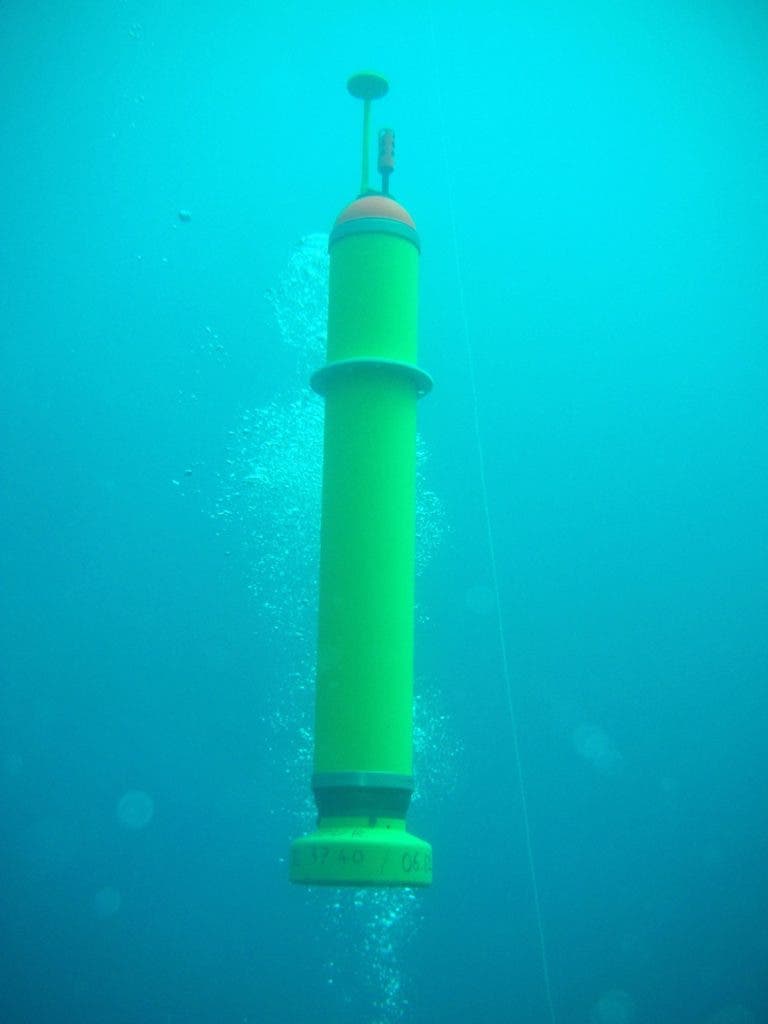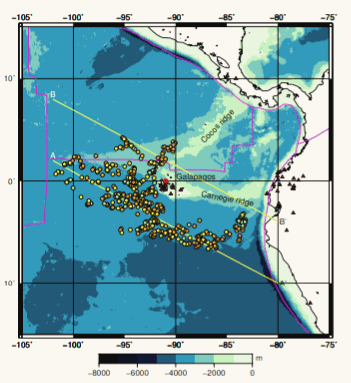In this case, however, MERMAIDS are seismic sensors, deployed around the world’s oceans.

Most of what we know about the Earth’s inside comes from seismic studies. Just like a doctor analyzes your body using ultrasound, seismic stations can pick up waves from earthquake to image the interior of the planet or deduce some of its characteristics. The problem, however, is that most of our planet is covered in water — and we don’t have too many seismic stations in water.
“Imagine a radiologist forced to work with a CAT scanner that is missing two-thirds of its necessary sensors,” said Frederik Simons, a professor of geosciences at Princeton. “Two-thirds is the fraction of the Earth that is covered by oceans and therefore lacking seismic recording stations. Such is the situation faced by seismologists attempting to sharpen their images of the inside of our planet.”
With this in mind, Simons and Guust Nolet (now Professor of Geoscience and Geological Engineering) developed a new type of seismic sensor: a hydrophone. The hydrophone’s earthy cousin, the geophone, is routinely used in surveys to detect subsurface resource. Both types of sensors are essentially a very precise microphone, capable of picking up the sounds of distant earthquakes — or to be more technical, to pick up acoustic energy from earthquakes. The resulting hydrophone was fitted with a GPS and sensors for temperature and water salinity and was mounted on a platform called a MERMAID (Mobile Earthquake Recording in Marine Areas by Independent Divers).
MERMAIDs can dive down to depths as large as 3,000 m and are easily launched from even commercial or amateur vessels. They drift passively, usually at around 1,500 m deep, and whenever they detect an earthquake, they quickly rise to the surface to accurately gather GPS data and transmit data via satellite. They are currently the first marine instruments capable of transmitting seismic data in (almost) real time.

region. Yellow dots show the location of MERMAIDs when the earthquakes were recorded. Image credits: Nolet et al.
The first fleet was launched in 2017 and now, an international team of researchers has presented the first scientific results.
For starters, MERMAIDs are useful to help scientists monitor abyssal currents — but that’s not even their main function. A more striking find is that the volcanoes on the Galápagos are fed by a so-called mantle plume: a magmatic source 1,200 miles (1,900 km) deep, connected to the surface volcanoes via a narrow conduit that is bringing hot rock to the surface.
These mantle plumes were first proposed in the 1970s as an important part of plate tectonics. Their existence has been confirmed in the meantime, but they have largely resisted attempts at seismic imaging because they are found in oceans, far away from seismic stations. The existence of this mantle plume was also indicated by abnormally high water temperatures.
In addition to filling in some missing puzzle pieces, the MERMAID network could also help geophysicists settle a long-lasting mystery about the Earth, which (thankfully) refuses to cool down.
“Since the 19th century, when Lord Kelvin predicted that Earth should cool to be a dead planet within a hundred million years, geophysicists have struggled with the mystery that the Earth has kept a fairly constant temperature over more than 4.5 billion years,” Nolet explained. “It could have done so only if some of the original heat from its accretion, and that created since by radioactive minerals, could stay locked inside the lower mantle. But most models of the Earth predict that the mantle should be convecting vigorously and releasing this heat much more quickly. These results of the Galápagos experiment point to an alternative explanation: the lower mantle may well resist convection, and instead only bring heat to the surface in the form of mantle plumes such as the ones creating Galápagos and Hawaii.”
The paper, “Imaging the Galápagos mantle plume with an unconventional application of floating seismometers,” by Nolet et al., has been published in Scientific Reports. doi: 10.1038/s41598-018-36835-w.






